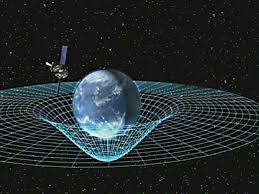

Most of us think of time as a deadline; a ticking clock around your wrist, an alarm clock by your bed-side; or perhaps, a collection of empty boxes on a calendar. It may seem as if it’s uniform and unwavering, since most of us live in a society where we’re constantly under deadline to reach work on time, pick the kids up from school, get dinner out of the oven before it burns… or simply staring at the clock, thinking there aren’t enough hours in a day. There are 60 seconds in a minute, 60 minutes in an hour, 24 hours in a day and 365 days in a year. That’s uniform — and according to Sir Issac Newton, it’s something that, like space itself, is entirely absolute. What if I told you, that time (as we know it) is just an illusion — a manifestation of our own notions about causality (cause and effect, or the “how” to the “why”)? Doesn’t sound so crazy, does it? Either way; read on:
If you had a science teacher that was worth their weight in salt, you probably know that there are three purported dimensions of space, with time comprising the fourth dimension. Together, the four make up the entirety of the spacetime continuum. Sir Issac Newton – one of the forefathers of modern mathematics and the inventor (or rather, the discoverer) of calculus – also contributed many invaluable ideas to physics. Perhaps the most important are Newton’s three laws of motion, which describe the relationship between objects and the forces of nature that interact with them. Another one of his famed ideas – and the most relevant to this topic – deals with the concept of absolute space and absolute time.
They suggest that time is an unchangeable quantity within the universe, it flows on its own without any outside influence and is the same everywhere to all observers. Now, we all know that Einstein’s theory of of relativity contradicts that thoroughly. Time passes differently from say, New York City, and Mars. It ticks much differently from Earth’surface than it does from the event horizon of a black hole. Similarly, the rate time ticks at is different when you speed up considerably. When these things were first unveiled, they changed everything we think we knew about physics, but several individuals have taken it to the max.
The authors of two particular papers introduce a new way of looking at the spacetime continuum; one that ultimately seems to suggest that the universe is “timeless” (so to speak).
What They Propose:
Three of the physicists involved – who include Amrit Sorli, Davide Fiscaletti, and Dusan Klinar – begin by telling us to think of time as the x-axis variable on a graph; a variable developed to visualize the evolution of a physical system (the physical system is our universe, in this case). We measure an object’s frequency and speed, but time is not generally measured here. Regardless, it has mathematical value without needing to have a primary physical existence. So essentially, we aren’t dealing with time as a variable in and of itself, we are actually using an object’s motion to derive the other information. According to the men, this could mean that Minkowski space is not 3D (with 3 dimensions of space and 1 dimension of time) but 4D, with no separate dimension granted to time. To expand:

“The point of view which considers time to be a physical entity in which material changes occur is here replaced with a more convenient view of time being merely the numerical order of material change. This view corresponds better to the physical world and has more explanatory power in describing immediate physical phenomena: gravity, electrostatic interaction, information transfer by EPR experiment are physical phenomena carried directly by the space in which physical phenomena occur,”
[Reference: Phys.org]
They believe that this point-of-view is preferable to the current one since:
“The idea of time being the fourth dimension of space did not bring much progress in physics and is in contradiction with the formalism of special relativity. We are now developing a formalism of 3D quantum space based on Planck’s work. It seems that the Universe is 3D from the macro to the micro level to the Planck volume, which per formalism is 3D. In this 3D space there is no ‘length contraction,’ there is no ‘time dilation.’ What really exists is that the velocity of material change is ‘relative’ in the Einstein sense.”
[Reference: Phys.org]
When he says “Einstein sense,” he’s partly referring to a comment Einstein made in his book. “Relativity,” where he said:
“Since there exists in this four dimensional structure [space-time] no longer any sections which represent “now” objectively, the concepts of happening and becoming are indeed not completely suspended, but yet complicated. It appears therefore more natural to think of physical reality as a four dimensional existence, instead of, as hitherto, the evolution of a three dimensional existence.”
To better explain:
As a Thought Experiment, Imagine This:
You have a photon that’s moving back and forth between two points in space. The space between the two is entirely composed of Planck distances, which is the smallest distance a photon can move at any given time. As the photon moves a Planck distance, it’s described as moving exclusively in space and not absolutely in time (which, again, is supposedly intertwined with the three dimensions of space.
“The photon can be thought of as moving from point 1 to point 2, and its position at point 1 is “before” its position at point 2 in the sense that the number 1 comes before the number 2 in the numerical order. Numerical order is not equivalent to temporal order, i.e., the number 1 does not exist before the number 2 in time, only numerically.”
[Reference: Phys.org]
Basically, this experiment suggests that time may just be the numerical order of change instead of the fourth dimension. Viewing time in this way – as a way of tracking change over time – not only resolves Zeno’s paradox of motion (the one with Achilles and the Tortoise), but it could perhaps even better describe the characteristics of the natural world.
“The theory of time as the fourth dimension of space is falsifiable and in our last article we prove there are strong indications that it might be wrong. On the basis of experimental data, time is what we measure with clocks: with clocks we measure the numerical order of material change, i.e., motion in space.”
[Reference: Phys.org]
In Conclusion:
It’s important to note that these ideas aren’t exactly new or well-accepted within scientific circles, but they do have very interesting ramifications for other parts of physics. The questions they pose are equally fascinating and they shape our view of the “natural order.” So, it’s certainly worth discussing extensively. To paraphrase Einstein again, “Reality is merely an illusion, albeit a very persistent one.”
Both papers (“New Insights into the Special Theory of Relativity” & “Time is the Numerical Order of Material Change“) have been published and can be read for free by following the links.